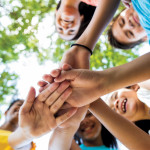Reading someone’s mood by his or her facial expression seems instinctive to adults. But children with social anxiety disorders often mistake anger for sadness, according to a study in the Journal of Genetic Psychology.
For the study, scientists tested about 80 children, ages 7 to 10, suffering social anxiety. The kids were asked to identify various emotions-happiness, sadness, fear and anger-presented in the form of facial expressions, body language and tone of voice.
Researchers found that while an angry intonation came across loud and clear, the children in the study consistently misread angry faces and postures. In both cases, they interpreted anger as sadness.
This inability to read emotional cues can make it even more difficult for kids with anxiety disorders to make friends in their peer groups. Picture what would happen in a social interaction if these kids misread an angry child’s nonverbal cues.
“If they’re seeing another child and they see that child as sad, because they’re nice kids they go over to help the sad child who is actually angry,” said study author Stephen Nowicki, MS, PhD. “Then they get rebuffed. They should be keeping their distance, but they don’t and they get hurt.”
To spare socially anxious kids this unnecessary pain, the authors offer this simple suggestion: Try to teach these children how to recognize the difference between the cues for sadness and anger.
Click here to learn more about anxiety disorders.






Comments
Comments